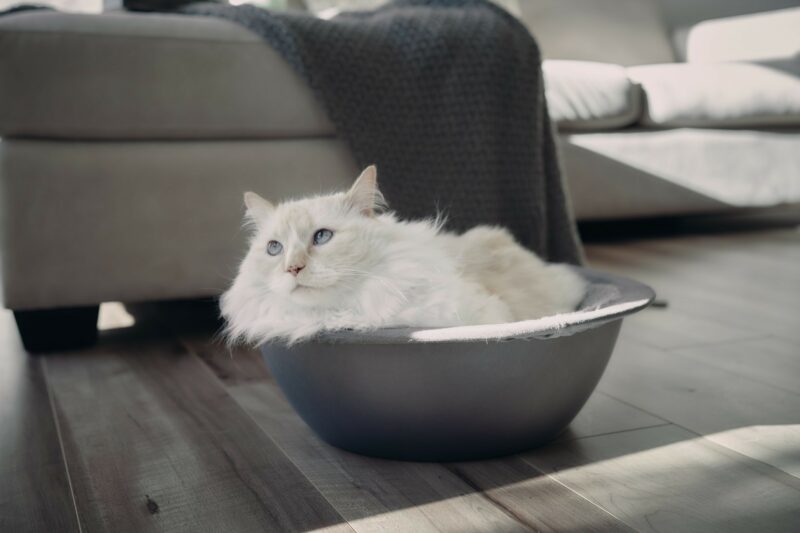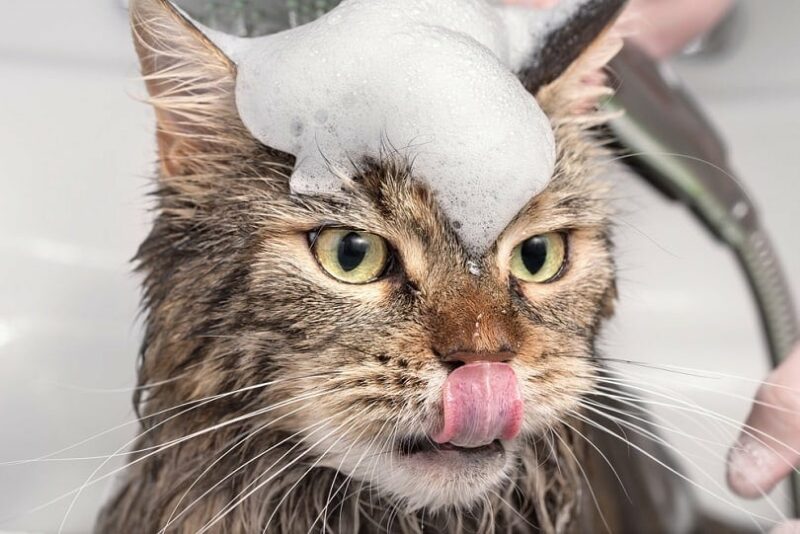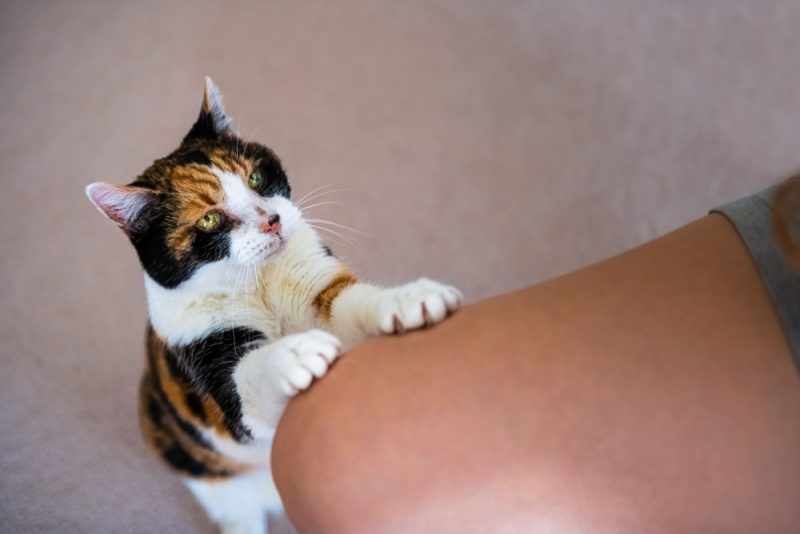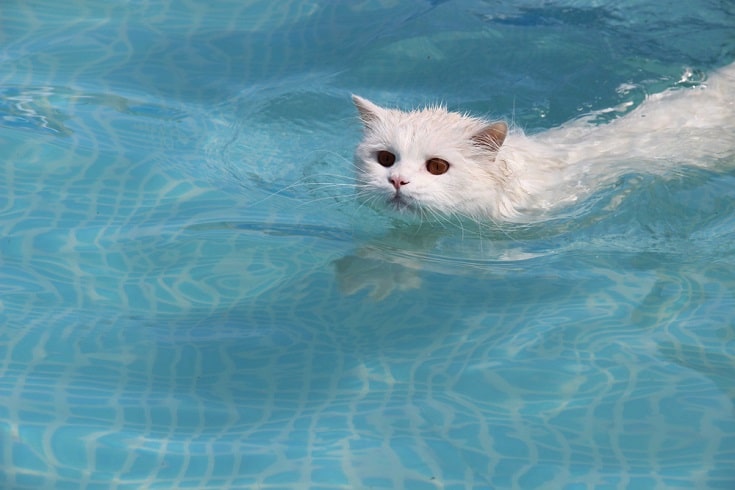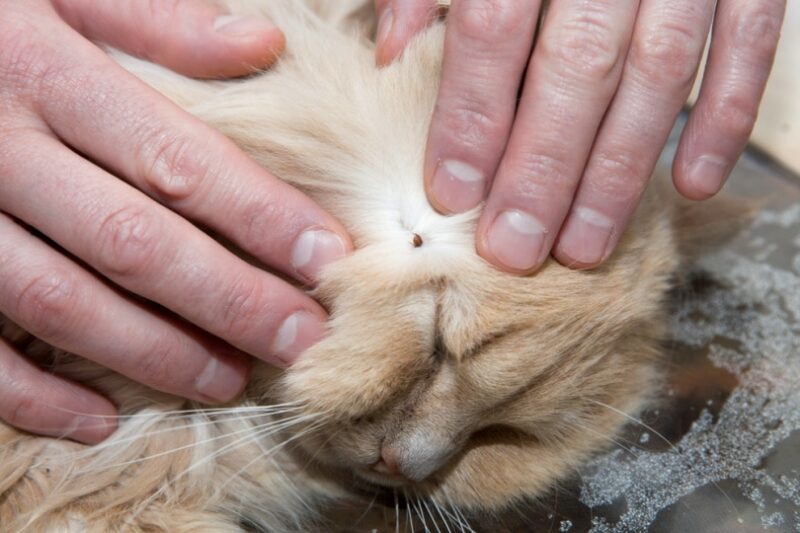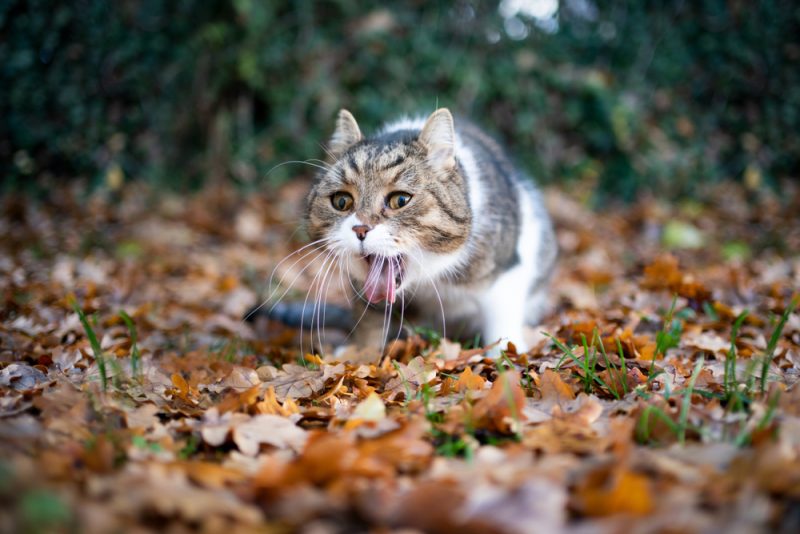Cat owners know that cats are more than just tiny predators with an aloof personality—they’re family. And just like with family, you want your fur family to feel safe and welcome in your home. That means prioritizing safety above all else, while practicality and fun come shortly after. It might not be practical to adopt all our advice in your home, but it helps to try! Let’s go over a step-by-step guide for how to make your home safer and more cat-friendly for your kitty.

The 8 Ways to Make Your Home More Cat-Friendly
1. Utilize Vertical Space
As predators, cats are instinctively drawn to elevated spaces that give them a strategic vantage point from which to survey your home (AKA their kingdom). Your cat can and will use any type of verticality, so set things up to make it safe. Install cat shelving along your walls that’s specially designed to emphasize safety, or go with a multi-level cat tree with scratching posts and cocooned rooms they can curl up in.
Your standard floating shelves probably aren’t up to snuff, so we’d recommend adding additional screws to make them less likely to buckle under the weight of your cat jumping on them. Alternatively, you can block them off with sticky double-sided tape or netting. If you have sturdy bookshelves, you could clear some of the shelves off to give your cat some space without buying new furniture. It’s not ideal, but your cat will appreciate the gesture.
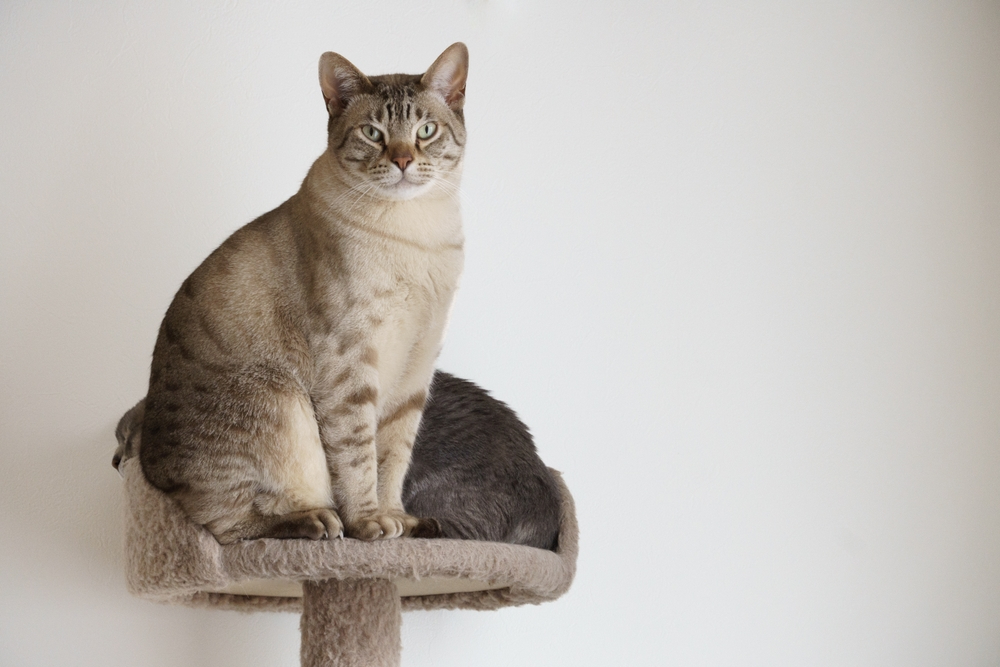
2. Create Private Spaces for Your Cat
Cats are private, solitary creatures by nature, and in the wild, they prefer to hang out by themselves in areas of their own choosing. You can skip their choosiness by creating the perfect space they’ll be instinctively attracted to. At a minimum, you’ll need to provide a private feeding area, a litter box area, and a place they can relax or retreat to when they get overwhelmed.
Ideally, each of these places is somewhere that doesn’t get a lot of foot traffic. A common mistake is to put these in easily accessed places next to rooms with lots of foot traffic, like the kitchen. However, that’s actually likely to stress your cat out. To make them feel more at ease, try to make the litter, feeding, and private areas as secluded as possible.
3. Rethink Major Hazards
If you have kids and think your childproofing is enough to protect your intrepid cat, think again. Cats are devilishly persistent when they want access to something, including your cabinets or other places they’re not supposed to go. Let’s cover the major areas you should be concerned about and what you can do to protect your cat from the most common household hazards.
- Sharp objects: Keep knives, scissors, and other sharp objects in closed drawers or secured containers with lids.
- Chemicals: Cleaning agents, drain cleaners, and other household chemicals should be kept behind closed doors or in childproofed cabinets.
- Medications: Keep your medications in childproof containers and in rooms your cat doesn’t have access to.
- Office equipment: Ideally, you could just keep your home office closed at all times, but go a step further and keep your paper clips, rubber bands, and other small choking hazards in secure drawers or closed containers.
- Electrical cords: Keep your charging cords, TV cables, and other household cords secured with cord protectors, or secure them to the underside of surfaces with zip ties.
- Toxic foods: Foods like chocolate, onion, and garlic are very toxic to your cat, so keep them out of reach, in your refrigerator, or in childproofed cabinets.
- Appliances: Keep appliances closed at all times, especially your washer and dryer, but also any small kitchen appliances with blades, like food processors or blenders.
4. Keep Easily Accessible Surfaces Clear
Your cat will check out everything in your house that they can reach, so you should get ahead of them by looking at your major surfaces. Take a critical look at your coffee tables, nightstands, kitchen counters, work desks, and dining tables. Are there loose objects or breakables that could pose a threat to your cat, like glass, coins, plastic bags, or aluminum foil? What about hazards like office equipment, power cords, or air fresheners?
Clearing your major tabletops of potential safety hazards is one of the best ways to keep your cat safe when you’re not around to watch their every move.

5. Secure Furniture
Your furniture will be your cat’s personal obstacle course and jungle gym, so it should be safe. Your cat may also pose a threat to certain materials like leather, so you’ll have to make your furniture both safe for your cat and against their claws. Let’s break down some ways you can do both just below.
- Protect your couches or valuable furniture with cat-proof slipcovers or double-sided tape to dissuade scratching.
- Provide at least one or two scratching posts per cat to satisfy their natural instinct to scratch and discourage furniture scratching.
- Use deterrent sprays with ingredients that cats dislike on prized furniture or areas.
- Ensure your cat has lots of mental stimulation through play and enough toys. Bored cats may resort to scratching furniture, while cats with enough stimulation are far less likely to do the same.
6. Offer a View
Even the happiest indoor cats crave a connection to the outdoors. This could be a nice view of nature where your cat can see trees and wildlife, or you could go the extra mile and install a catio. These fenced-in patios can be as simple as a small studio or as elaborate as a multilevel apartment/condo. If you’re an apartment dweller or don’t have a very good view to offer your cat, you could even just set up a screen with nature videos to add that natural touch your cat craves.
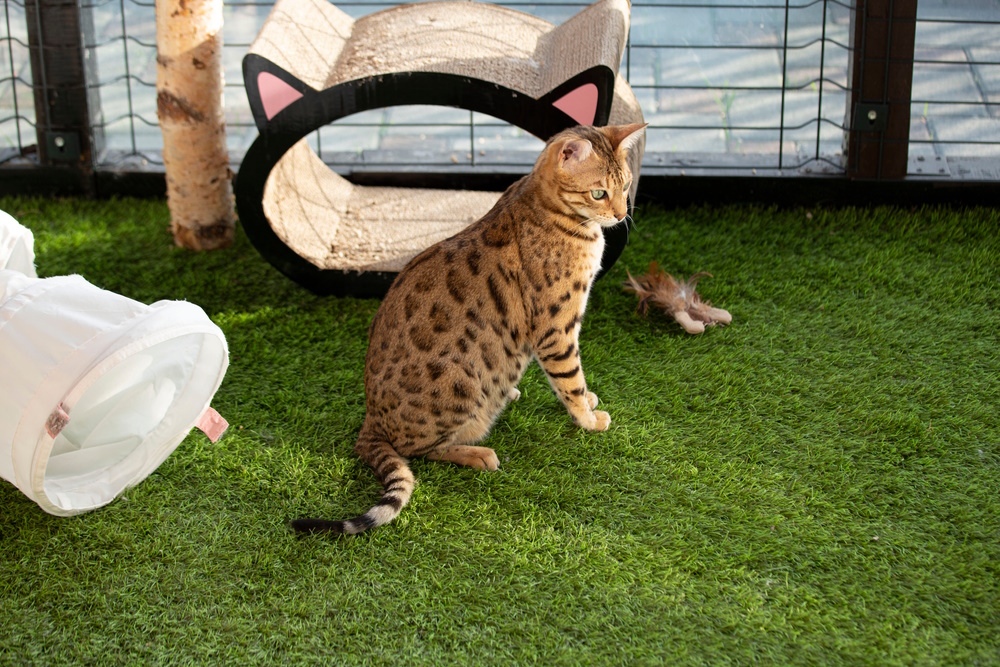
7. Opt for Cat-Safe Indoor Plants
Cat owners with indoor plants might be shocked to find that their plants are unsafe or outright toxic for their kitties. Indeed, some of the most common household plants and flowers should absolutely not be anywhere near your cat. Cats are naturally attracted to plants and will appreciate some greenery just like you do, so you need foliage that won’t be toxic if your cat bites a leaf or two.
- Spider plants
- African violet
- Some ferns, like Boston ferns
- Chinese money plant
- Orchids
- Jade plants
8. Keep Small Objects Put Away
Just like with kids, cats are prone to putting things in their mouths to try and figure the world out. Unfortunately, many things around your house aren’t safe for that particular practice. Small objects can pose a serious choking hazard for your cat, and the best way to stop choking in the first place is to remove choking hazards in the first place.
- Paper clips and staples
- Rubber bands
- Board game pieces
- Batteries
- Coins
- Sewing equipment, like needles and pincushions
- Christmas decorations—tinsel is especially dangerous!
- Bottlecaps
- Buttons
- Toys or toy parts

Conclusion
Cats are wonderfully adaptive creatures, but they need some help from you to be safe and comfortable in your human home. By adding high perches, blocking access to dangerous hazards, giving your cat their own areas, and incorporating some of the other tips above, you can help make this dream come true.
See also:
- Cat Utopia: How To Design The Perfect Place For Your Feline
- Are Plug-In Air Fresheners Bad for Cats? Vet Approved Facts & Advice
Featured Image Credit: Pixel-Shot, Shutterstock
